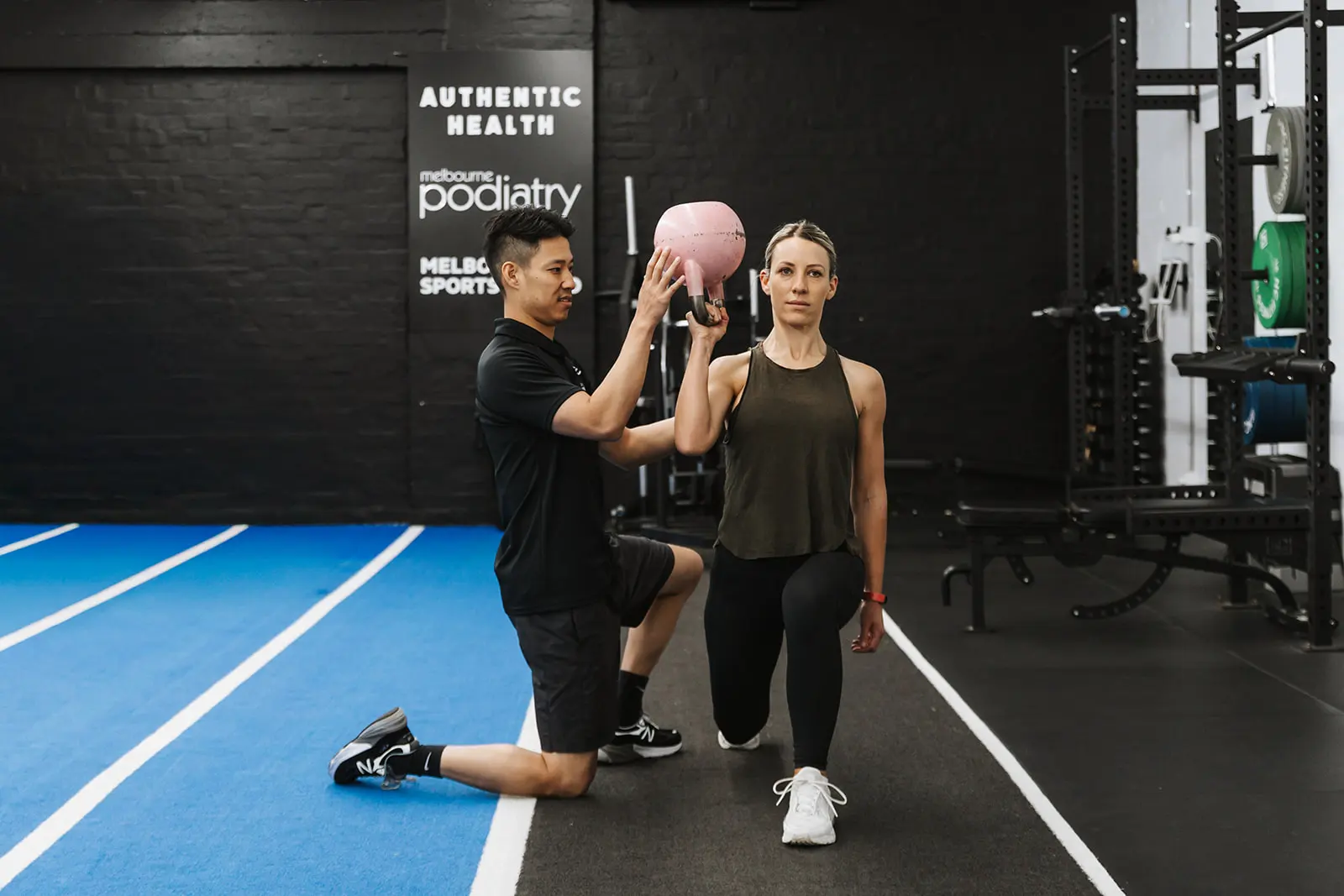July 2025
Laura Kavanagh, Physiotherapist
Physiotherapy Rehabilitation Post a Bankart Lesion: What You Need to Know
Shoulder injuries are common among active Australians, particularly those involved in contact sports or physically demanding work.
One of the more serious types of shoulder damage is a Bankart lesion, a condition that often leads to shoulder instability.
Whether you're considering your treatment options, recovering from surgery, or wondering when you'll get back to work or sport, physiotherapy plays a crucial role in your long-term recovery.
In this article, we'll walk you through:
-
What a Bankart lesion is
-
Whether surgery is always necessary
-
How physiotherapy fits into your recovery
-
What happens if you don’t treat it
-
And when you can expect to return to your usual activities
What Is a Bankart Lesion?
A Bankart lesion refers to damage to the labrum—a ring of cartilage around the socket of the shoulder joint.
This injury usually occurs after a shoulder dislocation, especially one that forces the arm out of the front of the joint.
When the labrum is torn, the shoulder becomes unstable and more likely to dislocate again. This type of injury is common in younger adults, athletes involved in high-impact sports (like AFL, rugby, or basketball), and people who experience falls or trauma to the shoulder.
Symptoms of a Bankart Lesion may include:
-
A feeling of the shoulder "slipping out" or instability
-
Recurrent dislocations
-
Pain or discomfort with certain movements
-
Decreased range of motion or strength
What our clients are saying about us
Treatment Options for a Bankart Lesion
Not every Bankart lesion requires surgery. Treatment depends on factors like age, activity level, severity of the tear, and how often the shoulder dislocates.
Non-Surgical Management
In some cases—especially where instability is mild—physiotherapy alone may be recommended. A targeted rehab program can help strengthen the muscles around the shoulder, improve joint control, and reduce the risk of future dislocations.
Surgical Treatment
For those with ongoing instability, recurrent dislocations, or if the initial injury was severe, arthroscopic surgery (known as a Bankart repair) may be required. This procedure reattaches the torn labrum to the socket using small anchors and sutures.
-
Your orthopaedic surgeon will help you determine the most appropriate treatment path. Regardless of whether you have surgery or not, physiotherapy is essential to full recovery.
Physiotherapy Rehabilitation Post a Bankart Lesion or Surgery
Why Physiotherapy Matters
The shoulder is one of the most mobile—and most unstable—joints in the body. After a Bankart lesion, muscles around the shoulder must be retrained to support and stabilise the joint properly. Physiotherapy helps:
-
Restore movement and flexibility
-
Rebuild strength in the rotator cuff and shoulder stabilisers
-
Prevent future dislocations
-
Guide a safe return to work or sport
When Does Physio Start?
If you've had Bankart repair surgery, physiotherapy typically begins within the first week or two post-op, depending on your surgeon’s instructions. The initial phase focuses on gentle movements to prevent stiffness while protecting the repair.
If you’re managing the injury without surgery, physiotherapy can begin as soon as pain and swelling are under control.
Book Online Now to Fix Your Body
Stages of Rehab
1. Early Phase (Weeks 1–6)
-
Sling use for comfort and joint protection (especially post-surgery)
-
Gentle, pain-free movements to maintain mobility
-
Isometric (static) exercises for surrounding muscles
-
Education on posture and activity modification
2. Intermediate Phase (Weeks 6–12)
-
Gradual strengthening of the rotator cuff and scapular muscles
-
Range of motion exercises progress further
-
Reintroduction of functional movement patterns
3. Advanced Phase (Weeks 12–20)
-
Sport-specific or work-specific strengthening
-
Plyometric or dynamic stability exercises
Book Online Now to Fix Your Body
4. Return to Full Activity (Beyond 20 Weeks)
-
Gradual return to training or physical duties
-
Final assessment by physiotherapist or specialist
-
Ongoing injury prevention strategies
Your recovery plan should be tailored to your needs—not everyone progresses at the same pace. Regular reviews with your physiotherapist ensure you're on track and progressing safely.
What Happens if I Don’t Treat My Bankart Lesion?
Ignoring a Bankart lesion, or delaying treatment, can lead to:
-
Recurrent dislocations
-
Chronic shoulder instability
-
Reduced range of motion and strength
-
Higher risk of long-term joint damage or arthritis
In young, active individuals, untreated Bankart lesions often result in repeated injuries, which can complicate future treatment and prolong recovery times.
Early assessment by a physiotherapist or orthopaedic specialist can help you avoid these complications.
Return to Sport or Work Post a Bankart Lesion
Can I Return to Sport?
Yes—with the right rehabilitation, most people return to sport. The timeline depends on the severity of the injury, whether surgery was needed, and the physical demands of your sport.
As a general guide:
-
Low-contact sports (e.g., swimming, cycling): ~3–4 months
-
High-contact sports (e.g., rugby, AFL, martial arts): ~5–6+ months
Your physiotherapist will conduct functional tests to assess strength, control, and confidence before clearing you for full participation.
Book Online Now to Fix Your Body
Returning to Work
If your job is sedentary, you may return to work within a few days to weeks, especially if non-surgical management is chosen. For physically demanding roles, return to work may take several months and should follow the same staged rehabilitation as athletes.
A physiotherapist can help you plan your return to work gradually, with modified duties and timelines suited to your recovery.
Final Thoughts
Recovering from a Bankart lesion—whether treated surgically or non-surgically—requires time, patience, and commitment to physiotherapy. The right rehabilitation program supports healing, restores shoulder function, and significantly reduces the chance of reinjury.
If you've recently experienced a shoulder dislocation, been diagnosed with a Bankart lesion, or are planning for surgery, speak to a physiotherapist with experience in shoulder rehabilitation.
Early intervention leads to better outcomes—and helps you get back to doing what you love, safely and confidently.
Book online to feel great & move well again!
Super Simple with Instant Confirmation & No Login Required!
For consultation fees and more information, please visit our Fees and FAQs page or call us on 03 9498 0205.
Some types of consultations may require pre-payment or a deposit. 100% Money Back Guarantee (T&Cs apply).
Learn how our Melbourne Sports Physio Team can help you?
At Melbourne Sports Physiotherapy our goal is to get you moving pain free as soon as possible.
But, we also want you to actually move better and live a healthier, more active and fulfilling life!
If your sports, fitness training or work has been wearing your body down, book in with one of our expert massage therapists so we can help you reduce your pain or stiffness.
If you are showing some signs of this condition or simply want help prevent this from happening in the future then book in with one of our highly experienced Remedial Massage Therapists today!
You can make an appointment by calling or booking online.



